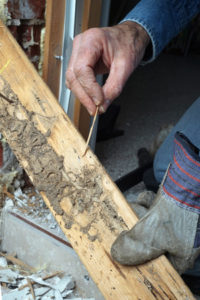 Did you know that termite damage costs U.S. homeowners an estimated $5 billion a year? Termites tend to be particularly active this time of year, when warm weather gives them an opportunity to swarm and form new colonies. With this in mind, it’s always a good idea to stay on the lookout for signs of termite activity in and around your home during the summer. Let’s start by inspecting your flooring.
Did you know that termite damage costs U.S. homeowners an estimated $5 billion a year? Termites tend to be particularly active this time of year, when warm weather gives them an opportunity to swarm and form new colonies. With this in mind, it’s always a good idea to stay on the lookout for signs of termite activity in and around your home during the summer. Let’s start by inspecting your flooring.
Blisters in Wood Floors
If you have wood or laminate flooring in your home, check for areas with “blisters” that might resemble water damage. This blistering effect tends to occur when termites start chewing through a home’s subfloor. If you find these blisters and you haven’t had a plumbing leak in the past, there’s a good chance that termites are the culprits.
Damaged Wood
Spotting termite-damaged wood can be tricky because the insects tend to burrow behind walls, floors and other surfaces. That said, you can sometimes find the tell-tale grooves that hungry termites leave in the wood around your home’s foundation. If you see signs of termite damage in a crawl space or on the bottom edges of your siding, for example, there may be more damage on other wood surfaces in the home as well.
Discarded Wings and Termite Droppings
Many termites leave their nests in the summertime to find mates and new places to expand their colonies. During this process, they tend to leave a lot of droppings and discarded wings laying around as well. If you find these droppings and wings around your home this summer, consider calling an exterminator sooner rather than later.
Concerned about hidden structural issues in your home or a home you’re thinking about buying? Give us a call or contact us online to schedule an inspection with the team at First Choice Inspectors today!
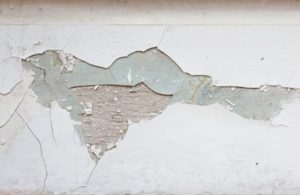 Despite the Chicago Department of Public Health’s efforts to address lead hazards in older homes, many neighborhoods in and around the city are still in need of lead paint abatement. Although lead-based paint is relatively harmless when left undisturbed, it can because a serious health hazard when it begins to deteriorate into a toxic dust.
Despite the Chicago Department of Public Health’s efforts to address lead hazards in older homes, many neighborhoods in and around the city are still in need of lead paint abatement. Although lead-based paint is relatively harmless when left undisturbed, it can because a serious health hazard when it begins to deteriorate into a toxic dust.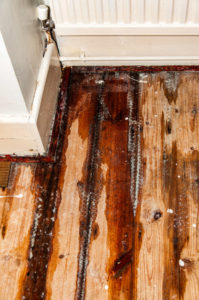 You find a home that you and your family absolutely love. You’re just about ready to make an offer, but then a routine home inspection reveals signs of past water damage. Could this cause more problems in the future? Should you abandon the home altogether? There are a few important things to consider before following through with the deal.
You find a home that you and your family absolutely love. You’re just about ready to make an offer, but then a routine home inspection reveals signs of past water damage. Could this cause more problems in the future? Should you abandon the home altogether? There are a few important things to consider before following through with the deal. Before you commit to buying a home, you should always have a home inspection done. A professional home inspection can not only identify areas of concern and items that need to be repaired, but also give you more leverage at the negotiating table.
Before you commit to buying a home, you should always have a home inspection done. A professional home inspection can not only identify areas of concern and items that need to be repaired, but also give you more leverage at the negotiating table.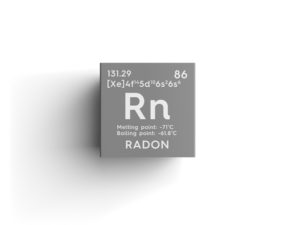
 Most Americans who own a home have a washer and dryer tucked away in a laundry room. In the late 1990’s, The U.S. Consumer Product Safety Commission estimated that
Most Americans who own a home have a washer and dryer tucked away in a laundry room. In the late 1990’s, The U.S. Consumer Product Safety Commission estimated that 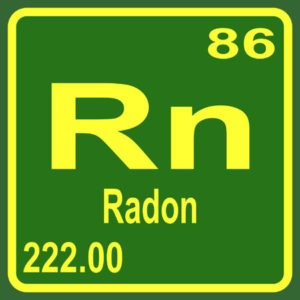 There are plenty of things to check off your to-do list before you buy a new home. One thing that many homebuyers neglect to do, however, is get a radon inspection before they move in. It can be easy to forget, but radon inspections are very important, particularly if you live in an area that’s prone to radon exposure.
There are plenty of things to check off your to-do list before you buy a new home. One thing that many homebuyers neglect to do, however, is get a radon inspection before they move in. It can be easy to forget, but radon inspections are very important, particularly if you live in an area that’s prone to radon exposure.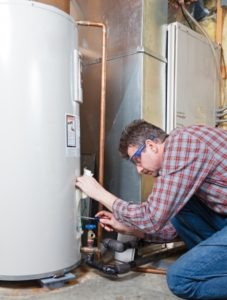 If you have a hot water heater that is more than 10 years old, it’s probably time for you to think about replacing it. Your typical tank water heater is only meant to last for about a decade, and while you might get a little bit more life out of it than that, you should be prepared for a water heater replacement once your water heater turns 10. There are also a few other signs that will tell you it’s time to replace your old water heater. Check them out below.
If you have a hot water heater that is more than 10 years old, it’s probably time for you to think about replacing it. Your typical tank water heater is only meant to last for about a decade, and while you might get a little bit more life out of it than that, you should be prepared for a water heater replacement once your water heater turns 10. There are also a few other signs that will tell you it’s time to replace your old water heater. Check them out below. When is the last time you had your home inspected? Most likely, it has been a long time since a professional looked it over, and that’s typical. But if you’re thinking of putting your home on the market, you should consider having First Choice Inspectors conduct a thorough inspection. Yes, you as the seller should get your home inspected. This is a proactive move on your part that can be used to more effectively market and sell the property. It’s like getting a “seal of approval” from an objective source. Furthermore, it allows you, the seller, to discover any problems that need repairs before they become a bone of contention in the negotiation process.
When is the last time you had your home inspected? Most likely, it has been a long time since a professional looked it over, and that’s typical. But if you’re thinking of putting your home on the market, you should consider having First Choice Inspectors conduct a thorough inspection. Yes, you as the seller should get your home inspected. This is a proactive move on your part that can be used to more effectively market and sell the property. It’s like getting a “seal of approval” from an objective source. Furthermore, it allows you, the seller, to discover any problems that need repairs before they become a bone of contention in the negotiation process. What can you expect during your home inspection? Typically your home inspector is a professional man who knows a lot about homes. He will give the home you’re interested in a thorough examination, much like a doctor checks a patient.
What can you expect during your home inspection? Typically your home inspector is a professional man who knows a lot about homes. He will give the home you’re interested in a thorough examination, much like a doctor checks a patient.